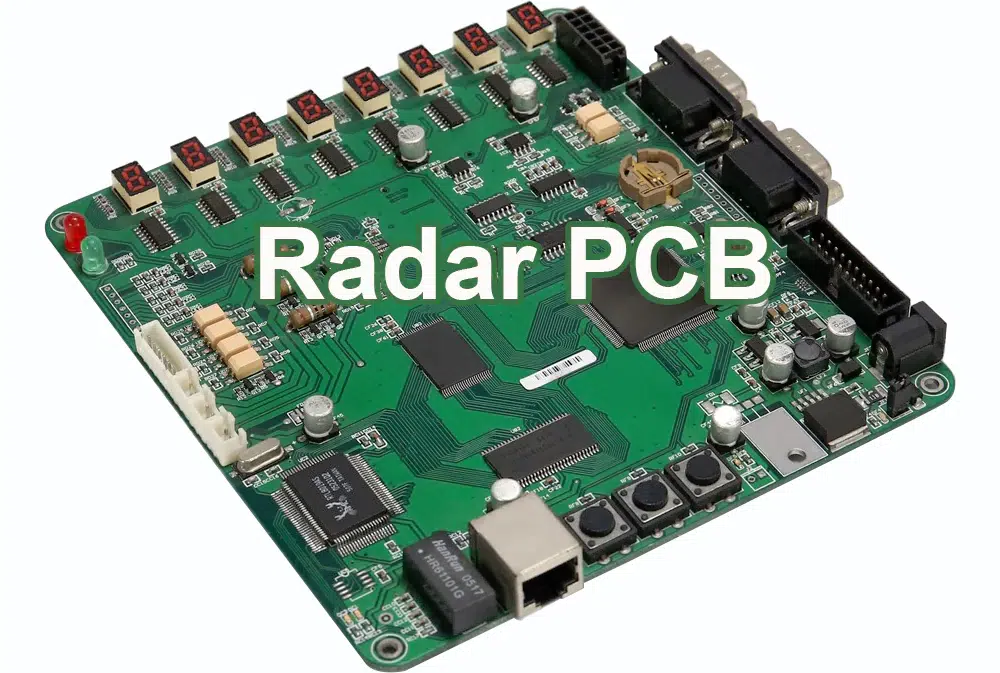The radar PCB is a key component in the radar system and has important functions and functions. This article will introduce about design principle, function, requirements and application.

Design principle
The design principle of the radar PCB is based on the working principle of the radar system, which detects the position and speed of the target object by receiving and sending electromagnetic waves. The radar PCB needs to be designed according to the frequency, power and working mode requirements of the radar system to ensure stable transmission and accurate processing of signals.
The design principle of radar PCB includes antenna design, radio frequency circuit design and signal processing circuit design. Antenna design needs to consider factors such as antenna gain, directivity, and frequency response to achieve accurate detection of target objects. RF circuit design needs to consider the functions of signal amplification, filtering and frequency mixing to ensure the strength and quality of the signal. The signal processing circuit design needs to consider the calculation and display of parameters such as the distance, speed and direction of the target object to provide accurate target information.
Signal processing function
The radar PCB has a signal processing function, which can process and analyze the received radar signal. Signal processing functions include signal filtering, target detection, parameter calculation, and data display.
Signal filtering is to denoise and enhance the received radar signal to improve the quality and reliability of the signal. Target detection is to determine the existence and position of the target object by analyzing and judging the filtered signal. Parameter calculation is to calculate the distance, speed, direction and other parameters of the target object based on the received signal. Data display is to display the calculated target information in the form of graphics or numbers, which is convenient for users to observe and analyze.
Performance requirements
The performance requirements of the radar PCB directly affect the detection capability and accuracy of the radar system. Key performance requirements include aspects such as frequency response, dynamic range, noise figure and power consumption.
Frequency response refers to the signal transmission capability of the radar PCB within the operating frequency range, and the frequency response is required to be flat and stable. The dynamic range refers to the maximum and minimum signal strength range that the radar PCB board can handle, which requires a large dynamic range and sensitivity. The noise figure refers to the influence of the noise introduced by the radar PCB on the signal quality, which requires a low noise figure and a high signal-to-noise ratio. Power consumption refers to the power consumed by the radar PCB during the working process, which requires low power consumption and high efficiency.
Application
Radar PCBs are widely used in military, aviation, aerospace, transportation, meteorology and security and other fields. In the military field, radar PCB boards are used for target detection, navigation and communication, providing important tactical support. In the field of aviation and aerospace, radar PCBs are used for aircraft navigation, obstacle avoidance and target tracking to ensure flight safety. In the field of traffic and meteorology, radar PCBs are used for vehicle and weather monitoring and early warning, providing important traffic and weather information. In the field of security, radar PCB boards are used for intrusion detection, border monitoring and target tracking to ensure safety and prevention.

Conclusion
As an important part of the radar system, the radar PCB has many functions and functions such as design principles, signal processing functions, performance requirements and application fields. Through the detailed introduction of the radar PCB, we can better understand the working principle and performance requirements of the radar system, and further understand the application prospects and importance of radar technology in various fields.










